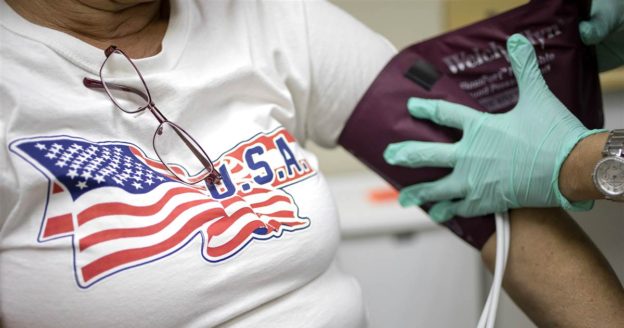The bottom number in a blood tension discovering out (the diastolic tension) has infrequently played 2nd fiddle to the damage number (systolic) in scientific settings, nonetheless contemporary research confirms that both numbers are significant in figuring out a particular person’s heart illness threat.
The peek, from researchers at Kaiser Permanente in California, used to be printed Wednesday within the Contemporary England Journal of Medications.
“Though systolic does rely for a diminutive bit extra in phrases of the threat of heart assault and stroke, diastolic hypertension is a shut 2nd, and or now not it’s an honest predictor of those risks,” acknowledged lead writer Dr. Alexander Flint, a stroke specialist with Kaiser Permanente.
A high diastolic number “with out a doubt ought to now not be uncared for,” he added. “We ought to now not relate victory upright on memoir of one number is below regulate. Now we glean got to listen to to both.”
Systolic refers to the amount of tension in a particular person’s arteries, when the center squeezes and sends blood throughout the physique. Diastolic is the tension within the arteries between heart beats.
The peek analyzed bigger than 36 million blood tension readings from 1.3 million adults. All glean been participants of Kaiser Permanente in Northern California. Most glean been white; upright 7.5 p.c glean been shaded.
“Recognizing that the diastolic blood tension moreover has to be controlled on memoir of it ought to lift threat for stroke is a staunch step ahead in our management for blood tension,” acknowledged Dr. Nieca Goldberg, a cardiologist at NYU Langone Medical Heart and clinical director of the Joan H. Tisch Heart for Females’s Health, who used to be now not alive to with the research.
All the draw in which via the final decade, mounting proof has shown that once sufferers can accumulate their blood tension down to phases below what used to be previously regarded as “regular,” they vastly lowered their threat for heart assault and stroke.
In 2017, the American Coronary heart Association and the American College of Cardiology updated their guidelines for optimal blood tension. Anybody with a dimension over 130/80 mmHg is belief of as to glean hypertension.
Neither Goldberg nor moderately a few outside heart consultants glean been stunned by the findings.
“Here’s one thing I’ve believed for years, that we ought to cope with both systolic and diastolic blood tension,” Dr. Angela Brown, an affiliate professor of medication and scientific hypertension specialist at Washington College College of Medications in St. Louis, wrote in an e mail to NBC Info.
“I emphasize this point in coaching my students, residents and fellows on memoir of they sometimes tend to push apart the diastolic tension,” Brown acknowledged.
Brown moreover emphasized that youthful other folks usually glean greater diastolic readings than systolic readings, similar to 130/100mm Hg, when put next with older other folks whose systolic readings is most likely greater, similar to 170/80 mmHg.
Both systolic and diastolic hypertension could possibly possibly also be handled with the same forms of medicines, nonetheless some clinical doctors could possibly want to interchange the medicines or doses to construct up sufferers below that 130/80 mmHg tag.
“All people’s reaction to medication is rather a few, so it with out a doubt has to be in my view tailored,” Flint acknowledged.
Lifestyle components are possibly the excellent driver of hypertension. The American Coronary heart Associationrecommends various ways to diminish your blood tension and take care of it in a healthy differ. These include:
- eating a smartly-balanced food regimen that’s low in salt.
- limiting alcohol to two drinks a day for males, one for females.
- exercising about 30 minutes a day, 5 days a week.
- quitting smoking.
- shedding pounds in case your physique mass index is over 25.
FOLLOW NBC HEALTH ON TWITTER & FACEBOOK
Erika Edwards
Erika Edwards is the health and medical news writer/reporter for NBC News and Today.
